Clean solution: Reliable and economical sewage sludge incineration for 24 years at the Steinhäule/Ulm sewage treatment plant
Apr 11, 22
Clean solution: Reliable and economical sewage sludge incineration for 24 years at the Steinhäule/Ulm sewage treatment plant
In 1993 a Putzmeister KOS piston pump pumped hot sewage sludge in the Steinhäule sewage treatment plant near Ulm/Neu-Ulm for the first time. Today – 24 years later – the Putzmeister technology currently operated on-site includes 8 KOS pumps, 2 receiving bins, 2 storage silos each with discharge equipment, several hundred feet of high pressure delivery lines including fittings, metering valves, lubrication injection systems etc.
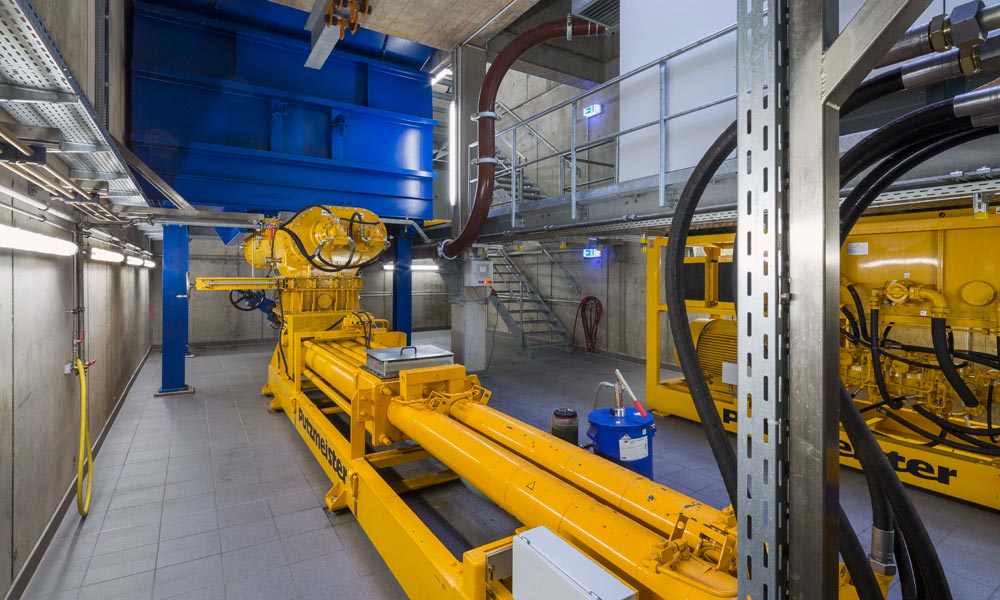
KOS 2180 below one of the two receiving bins
Several communities around the cities of Ulm and Neu-Ulm with their roughly 440,000 inhabitants belong to the catchment area of the „Steinhäule sewage treatment plant“ administration body. Every year around 10 billion gallons (40 million cubic metres) of wastewater flow through the mechanical and biological treatment stages of the sewage treatment plant on the Danube. This waste water results in approximately 260 million gallons (one million cubic metres) of raw sewage sludge.
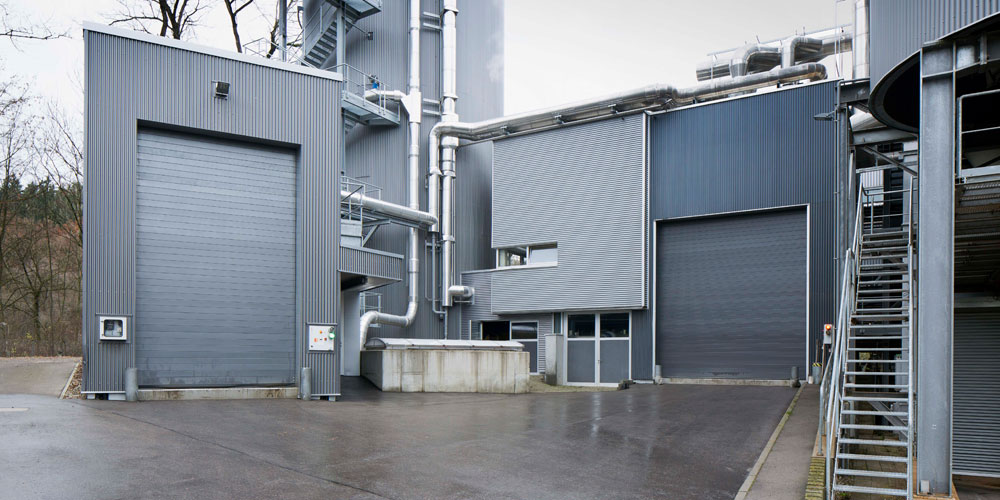
Every year up to 60,000 t of external dewatered sewage sludge is hauled from the surrounding communities
After the dewatering process approx. 40,000 t of sewage sludge are remaining yearly. On top of that, the plant is receiving about 60,000 t of external dewatered sludge per year.
Sewage sludge was first disposed in a mono incineration in 1973. The sludge with a dry matter content (dry solids) of roughly 20 % made its way directly into the fluidized bed furnace via the trough chain conveyors. Sludge with these dry solids does not burn by itself. 260,000 gallons (One million litres) of oil had to be added to the furnace every year to keep the incineration going. Incredible in modern times.
In 1979 a second furnace was installed and in 1986 the sewage treatment plant received a drying plant. Soon after that the first Putzmeister pump was delivered to the plant. When Erwin Schäfer, who has been the manager of the incineration plant for 22 years, is asked about the advantages, he spontaneously says: Closed system. High availability. No more sludge adhesion.
Putzmeister technology convinced him. As it was planned to receive external sludge from neighboring districts in the future, Putzmeister carried out pump tests. Since 2007 up to 60,000 t of external sludge is incinerated every year in addition to the on-site sludge.
The current capacity utilization rate of the plant is very high. The plant is utilised in three shifts, 7 days a week. Schäfer added that he has enough requests for sewage sludge reception. The operation is economically successful. Another sewage sludge line is to be built by 2021.
According to Schäfer, a major topic is the reduction of energy requirements. Attempts are made to add as little fuel as possible during the incineration process. Today only 40,000 gallons (150,000 litres) of oil are required every year (compared to almost 7 times this amount previously). One reason for this is the considerably dryer sewage sludge. It self-combusts from a dry solids content of 40 %.
750 to 1,250 kW of power is generated in the steam turbines from the heat of the two fluidized bed furnaces.
Significantly more sand enters the plant with the high proportion of external sludge. This causes increased wear, particularly as the sludge pumped today is dryer. This means that the wear sleeves of the delivery pistons are replaced every 2,000 hours. With a total of 8,500 operating hours per year this equates to 4 service operations.
The on-site sludge which is mechanically dewatered with centrifuges has a significantly lower sand content and requires much less maintenance: The wear sleeves of those pumps are having a lifetime of approx. 4,500 h.
The pumps are installed with sufficient space for service activities. The hopper is easily accessible thanks to a simple and clever solution: The bolted connections of the adapter and the feeding screw conveyor are slackened and the pump swings out on its frame around a fixed pivot point by 19 °. The KOS is positioned on plates which are assembled on the ground especially for this purpose.
In order to pump the sewage sludge safely through the delivery lines – the longest distance is 180 feet (55 m) from the large silo to the dryer –, a polymer is injected at certain points via a Boundary Layer Injection (BLI).
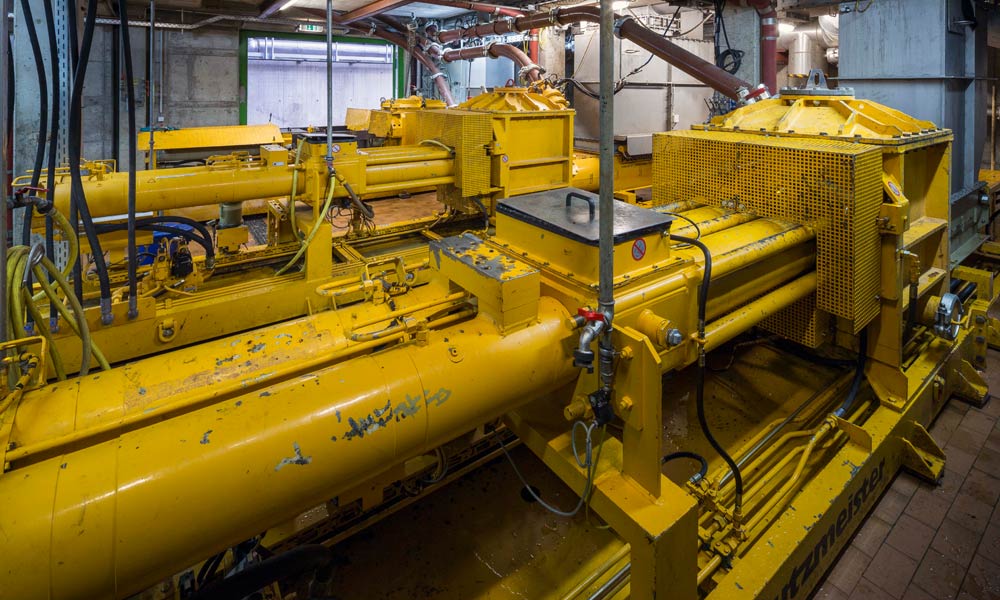
The hot sludge department: Two KOS 1070 HP LIB and one KOS 1040 HP LIB under the three dryers convey the 65 to 70 °C hot sewage sludge
Steinhäule sewage treatment plant association
The Steinhäule sewage treatment plant association was set up in 1984 and its members include 11 towns and communities around Ulm/Neu-Ulm in Southern Germany. It currently employs around 50 people. Around 40 million cubic metres of wastewater are cleaned and treated there every year.
An adsorptive cleaning process follows the mechanical and biological stage which eliminates organic contaminants and impurities, i.e. bacteria, viruses and so-called micropollutants such as pharmaceutical residues, hormones, chemicals or pesticides. Activated carbon particles added to the wastewater bind these harmful substances to their large surface and the harmful substances can be filtered out.
At the end of the biological cleaning stage the sludge is separated from the water in the secondary settlement tank. Since 2015 the water from here enters the adsorptive cleaning stage, before it is finally fed to the river Danube. The sewage sludge is then processed for thermal recovery, i.e. drained, dried and then incinerated.
60,000 to 150,000 cubic metres of water must be cleaned every day. The process from the supply of the wastewater to the discharge of the clarified water into the Danube takes approximately 10 hours. The river itself would require 10 days with its self-cleaning capacity.
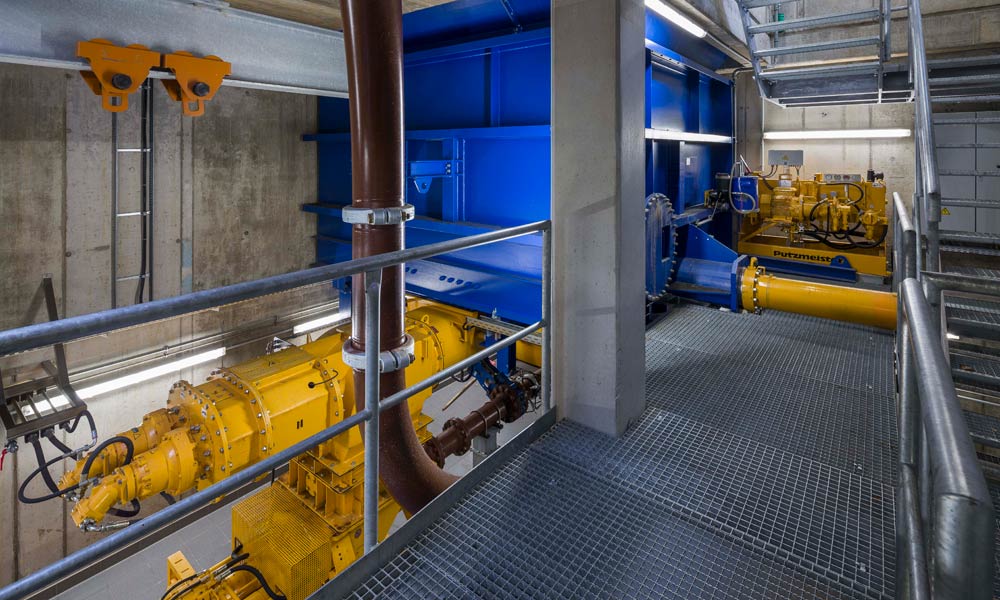
A crane device is fitted over the pump
The constant modernization and expansion of the Steinhäule sewage treatment plant ultimately affects the quality of the final result of this process: The ash. Around 7,500 t of ash are generated every year from the burned sewage sludge. 99 % of the phosphorous remains in the ash as a result of the thermal recovery.
„Our ash is so good“, explains Erwin Schäfer, „that we can deliver it directly to a manufacturer, who mixes it with limestone to produce fertilizer for agriculture with a phosphate content of 6 %.“ It complies with the values of the currently applicable European fertilizer ordinance.
The key word is phosphorous: Compounds made from this chemical element are essential for all beings. As the availability of phosphorous is limited, efforts are made to achieve the most efficient recovery, for example from sewage sludge. With the so-called co-incineration of sewage sludge, e.g. in coal-fired power plants, phosphorous cannot be separated economically at the end, unlike with mono incineration. It avoids harmful substances and has a high potential for the recovery of phosphorous.
The team at the „Steinhäule sewage treatment plant“ is optimistic about the future with regard to the economy of the plant and the contribution to a cleaner environment. Not least thanks to the reliable Putzmeister system technology in sewage sludge incineration.
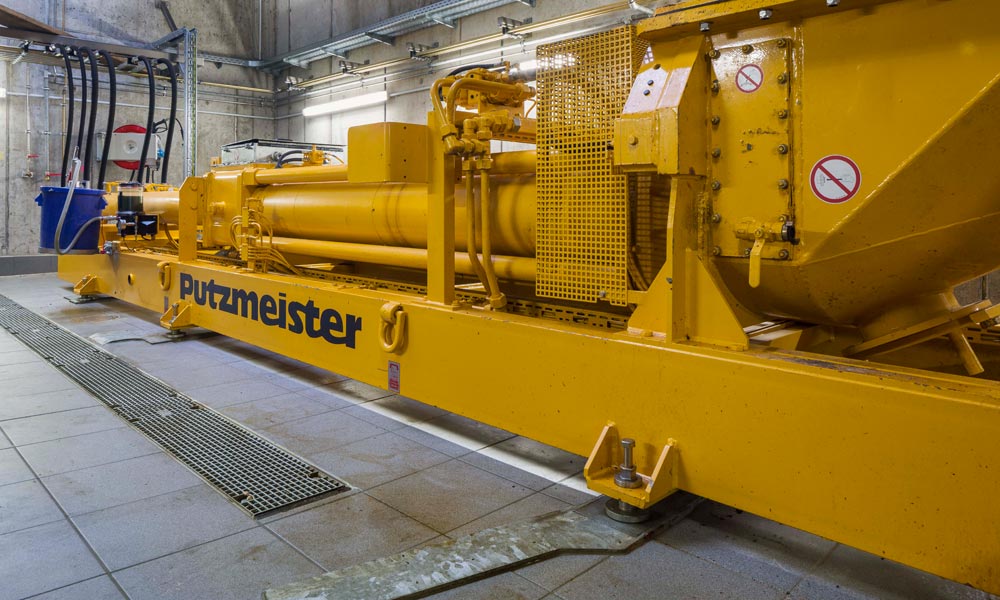
Innovation for maintenance: The KOS is simply swivelled out on plates installed on the ground
Fluidized-bed combustion
In Germany stationary fluidized-bed combustion is mainly used for the mono incineration of sewage sludge. It is considered the most tried-and tested large-scale method. Combustion air causes the sand to flow through the combustion chamber and keeps it suspended (fluidized). This ensures a high momentum and heat exchange with the injected fuel sewage sludge.
The combustion temperatures in the fluidized-bed combustion are between 1560 and
1740 °F (850 and 950 °C ). The arising ash has a low particle size and can be discharged from the system via the exhaust system and cleaned as standard. [Source: Innovative process for sewage sludge treatment – A selection, Jörn Frank, Ralf Wittstock]